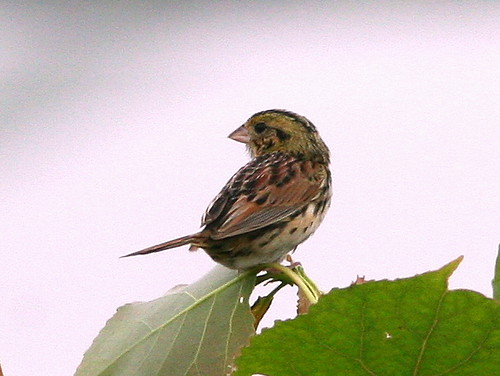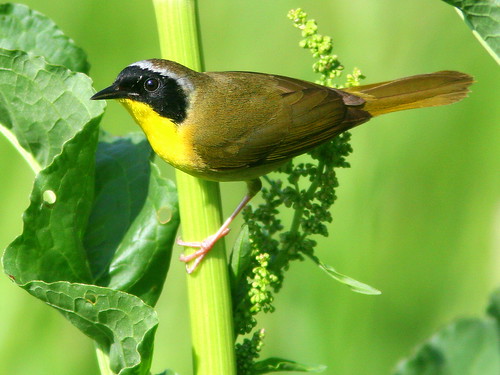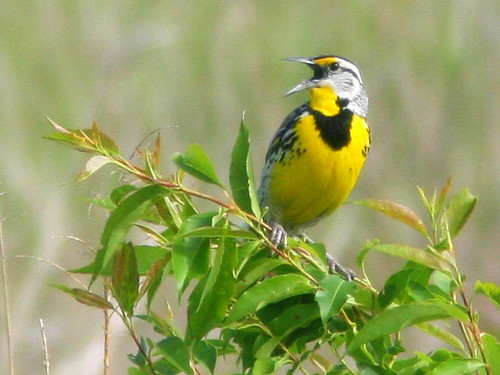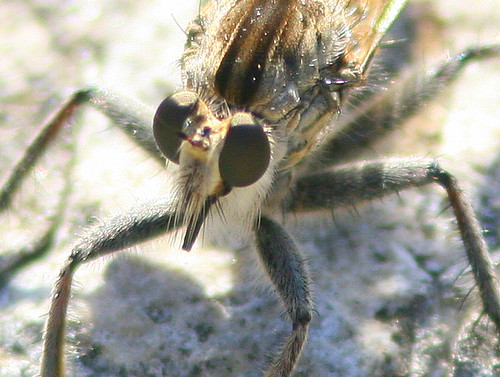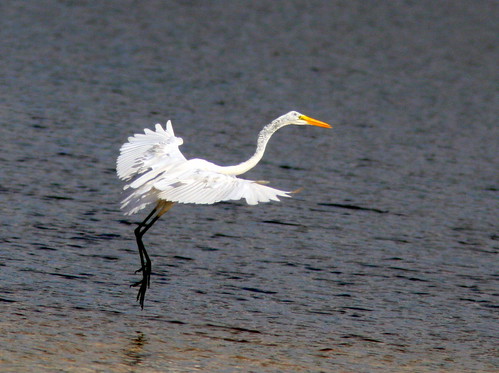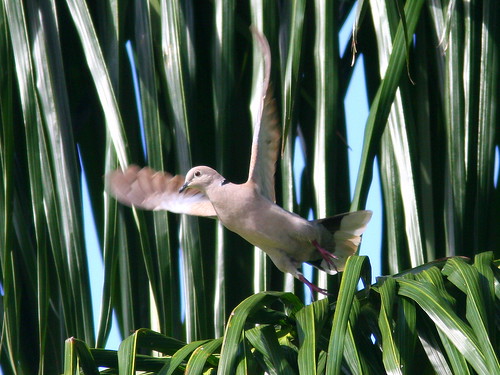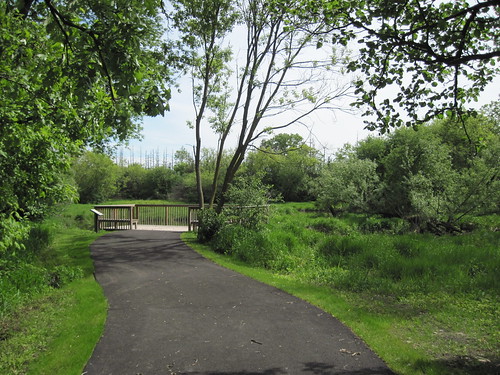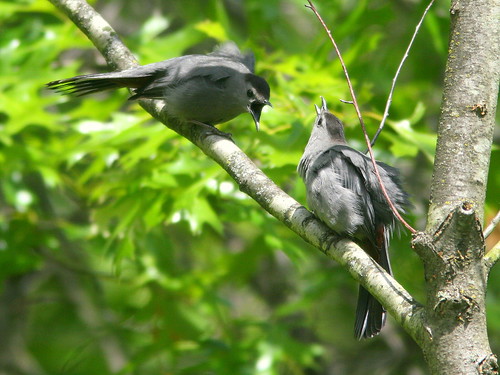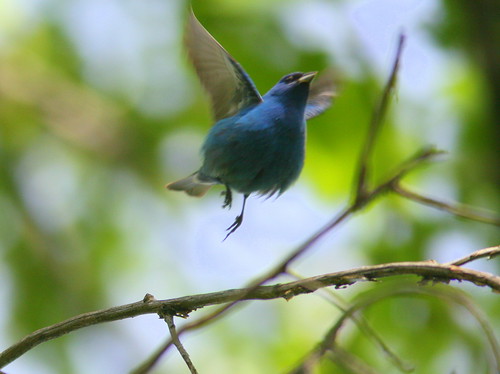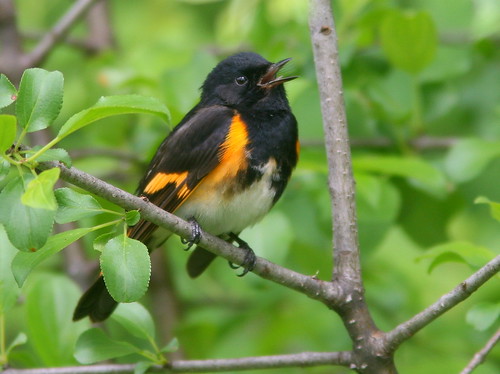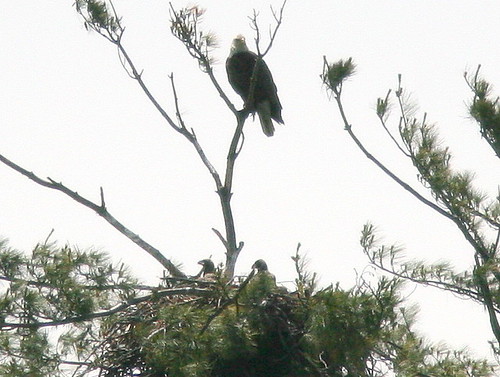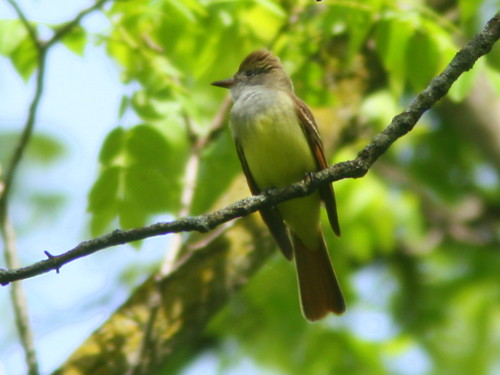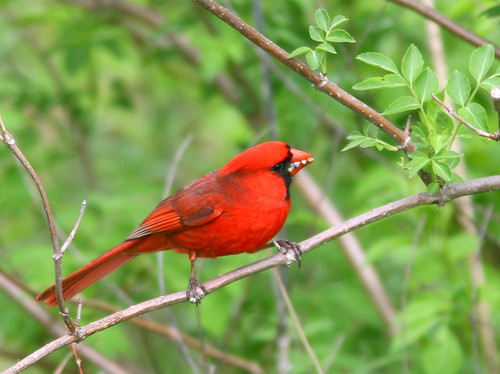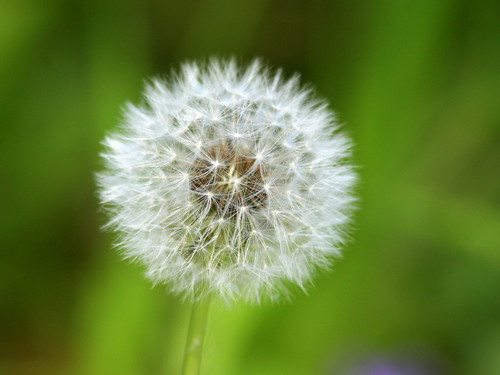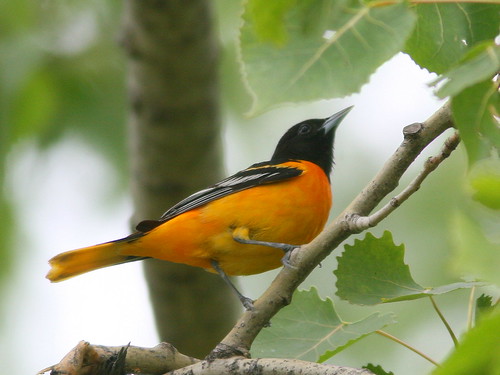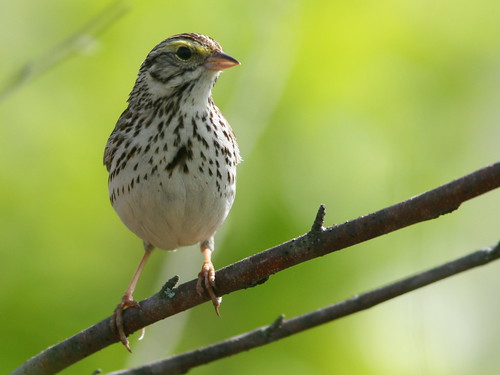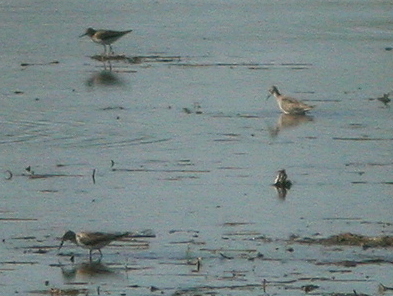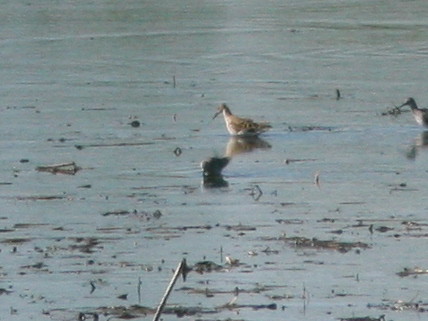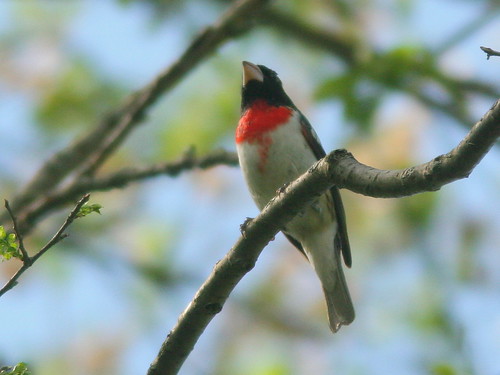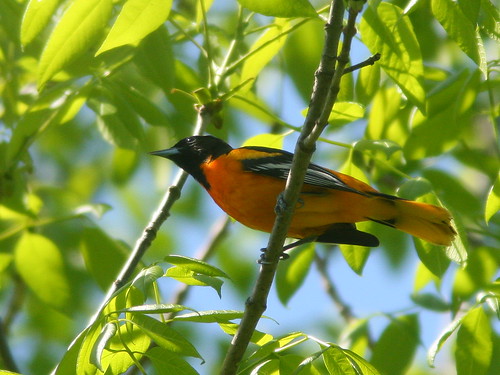Posted by: Ken @ 11:55 am
As the day of our departure from Chicagoland drew near, our birding concentrated on woodland migrants. We still had not explored the prairie habitat at Nelson Lake/Dick Young Forest Preserve near our Kane County second home. We used the last of our free time to walk the two mile loop around the grasslands, hoping to see returning Dicksissels, Bobolinks and threatened Henslow’s Sparrows. We saw none of these three species. It may have been a bit early for them, and extensive controlled burns had reduced the amount of cover.
Henslow’s Sparrows prefer to build their nests where there is an accumulation of dead grass stalks from at least one previous summer. They also abandon a grassland after too much litter accumulates on the ground, so a cycle of wildfire or controlled burns is essential to provide them with suitable breeding habitat. Researchers have found that Henslow’s Sparrows tend to shun islands of apparently favorable habitat that are surrounded by freshly burned or overgrown grassland. Last fall, the area of controlled burns at Nelson Lake was much larger than in previous years, but there are still some sections of prairie that look favorable for this species. I just hope that the spared areas are not too fragmented. Bobolinks also seem to like more expansive areas of high grass, while Dicksissels appear less selective, being found along overgrown fence rows as well as the open prairie.
Last year, I photographed this Henslow’s Sparrow in mid-June at Nelson Lake:
The morning was clear and the temperature was in the mid-60s, although a stiff northerly breeze made us feel chilly. Red-winged Blackbirds were nesting, and singing “Conk-Ra-Lee.” We also heard songs of American Goldfinches and Savannah Sparrows.
The songs of Common Yellowthroats filled the air:
Eastern Meadowlarks added to the chorus:
Sedge Wrens found the edges of the trail and the margins of burned areas particularly inviting. We heard them about every 100 yards along the path:

In a small willow tree along the creek at the west end of the lake, an aptly named Willow Flycatcher perched: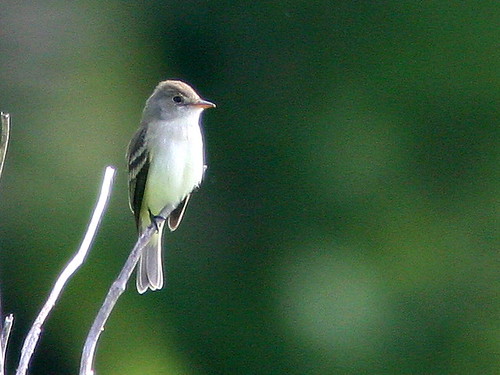
It was easy to photograph him singing, as the song has two syllables: “Fitz-Byew.” I simply clicked the shutter when I heard the “Fitz.”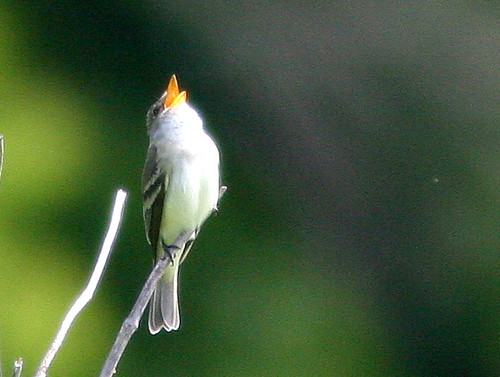
Maintaining two homes that are 1400 miles apart creates some inconveniences. It means that you must have two of everything, from can openers to vehicles and major appliances. We waste time flying between Florida and Illinois and back again– not only an entire day on limos and airplanes, but days before and after the trip. First we have to pack and get ready to travel, then unpack and shop for groceries at the other end. We often plan around important events such as birthdays, dance recitals and medical and dental appointments. Arriving in Illinois in early spring, we wanted to rush out and greet the migrating birds. Before departing we squeezed in as much time in the field as possible.
Once back in Florida, after several days of necessary domestic chores, I grew increasingly restless and in need of my minimum daily requirement of 20 bird species (BirdChaser’s “Birding RDA”)
Finally, I broke free and walked my local “patch” of recovering Everglades. Although I began my walk a little after 7:00 AM, the sun bore down and the temperature quickly climbed into the low 90s.
During our absence, had a snow-covered mountain appeared on the South Florida horizon?
For a moment, I thought I was in Oregon or Washington State! No, this is not photoshopped– this mountain of “coral” (limestone) rock is being mined from the bottom of a deep flooded quarry at the foot of the 196th Avenue canal, about 1 1/2 miles to the south. Over 15 square miles of wetlands in far NW inhabited Miami-Dade County have been permitted for rock mining. In addition to the threat to the Everglades ecosystem, groundwater pollution of several nearby water wells is a concern of conservationists. Nearby homeowners blame the daily blasting for cracks in foundation slabs.
I’ve never before seen the stone piled this high. This photo is taken from 1 1/2 miles away, and you can’t really see the bottom of the “mountain.” I wonder if this is the highest topographic point in South Florida. Demand may be down and they are stockpiling it. Much gets exported– Panama is said to be a big customer. The lake formed by this quarry must be very deep– at least 100 feet. Surely it penetrates the aquifer. I don’t know how they can keep from contaminating the ground water this way.
Along the canal, Deer Flies ignored the insect repellent and bit at my face and neck.The jaws of this Robber Fly appear menacing, but it prefers to eat other insects:
The Red-winged Blackbirds made me feel as if I were back in Illinois:
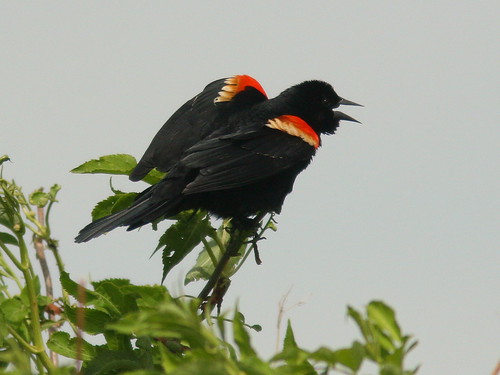
I disturbed a male Northern Flicker eating ants along the levee, and from the seclusion
of a small tree, he waited to resume the feast :
Surprise! The flicker has blue eyelids:
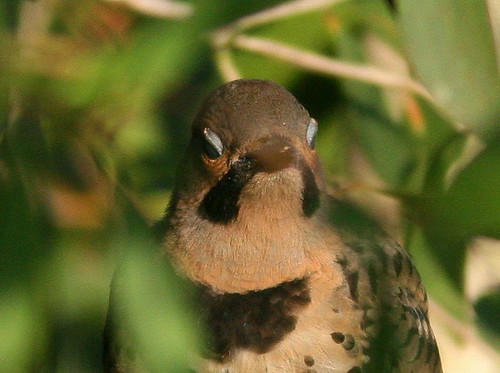
This Northern Cardinal looked and sounded just like those in Illinois: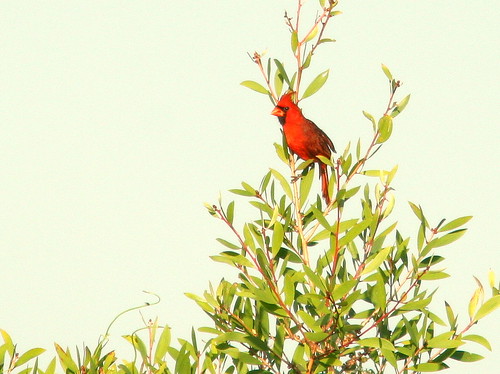
However, an Eastern Towhee’s weak song (”ti-ti-te-e-e-e-e-e” instead of “Drink Your Tea!”) and calls (”treee?” instead of “Chew-ink?”) differed markedly from those in the north, and its eyes are straw-yellow instead of red as in its Illinois counterparts:
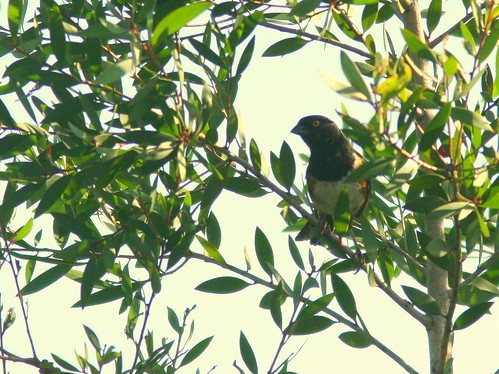
This Loggerhead Shrike scolded the mockingbirds that were harassing it: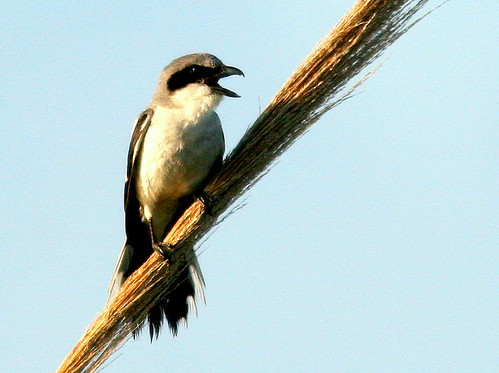
Unusually, a Common Nighthawk foraged in the daylight. I was lucky to capture it in erratic flight:
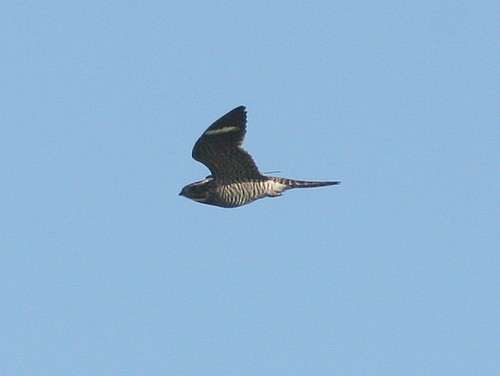
White Peacock butterflies patrolled small stretches of the path, chasing after females and repelling rivals:
An Anhinga reminded me that I was back in Florida:
A Great Egret was the only long-legged wader I encountered, and by now I had only seen 18 of the 20 species that would satisfy my “RDA.”
A Mottled Duck enlarged my list to 19…
…and, on the way back, a Eurasian Collared-Dove lofted gently from the top of a Royal Palm, bringing my total to 20:
Back at the house, I later saw a Blue Jay and a Little Blue Heron. That evening, a high-stepping Snowy Egret walked the lake at the edge of our back lawn, the 23rd species for the day. I had exceeded my RDA:
Posted by: Ken @ 10:43 pm
Here in Illinois, the trees are almost completely leafed out. This, combined with a series of overcast days, has made it difficult for me to ID warblers high in the trees. Resident birds now dominate the scene, the more colorful of which are Baltimore Orioles, Rose-breasted Grosbeaks, Scarlet Tanagers and Indigo Buntings.
Mary Lou and I have visited our local “patches” nearly every morning, hoping not to miss the spring migration warbler bonanza. Frankly, too many of the warblers we encountered ended up in the “unidentified” column. This morning I saw an Orange-crowned Warbler in Hawk’s Bluff Park, Batavia, Illinois.
Hawk’s Bluff Park observation and fishing deck on a bend of Mill Creek:
The broken eye ring, yellow undersides and grayish head help distinguish the Orange-crowned Warbler from other similar warblers such as Common Yellowthroat and female Yellow Warbler:
While I was trying (unsuccesfully) to get photos of a small flock of Blue-gray Gnatcatchers, these two Gray Catbirds suddenly appeared. They were displaying and interacting in a manner that suggested courtship rather than hostility, but they flew off before I could better interpret their actions.
This image makes it look like an angry confrontation, but they did not attack each other and seemed to be engaged in a mating ritual or “dance’ (click on the photo for another view):
Nearby, an Indigo Bunting appeared to be jumping for joy:
A Red-tailed Hawk floated overhead:
American Redstarts were the most common of the warblers at Hawk’s Bluff:
From the south end of Hawk’s Bluff, two eaglets are clearly visible in this shot of the Mooseheart nest, the first in Kane County since DDT was abolished in the 1970s:
Here is a male Yellow Warbler, seen at Les Arends Forest Preserve in Batavia, also a rather poor image due to the heavy overcast: 
An Eastern Kingbird appears ever vigilant…
…while an Eastern Phoebe seems to be at peace with the world:
A third species of flycatcher, this Great Crested, calls from the upper canopy:
A White-eyed Vireo sings his heart out:
At Jones Meadow Park near our North Aurora home, we often heard and sometimes caught glimpses of several Soras that nest in the wetlands. This time I was lucky. High water had forced them up the berm near the trail. It was difficult to focus on them through the high grass, but two ventured so close to me that I could not get their entire bodies in my viewfinder.
This Sora walked right out in the open, almost at my feet (click on photo for more views):
A resident Muskrat munches on cattail sprouts:
Also at Jones Meadow, this Northern Cardinal seems to be wearing a set of false teeth! On closer examination, his mouth is full of seeds, probably intended for a nestling:
American Goldfinches abounded:
Sporting a bright reddish cap, a Chipping Sparrow visited the play area at Jones Meadow Park:
A late White-crowned Sparrow pecked at dandelion seeds along the path:
The sparrow missed this perfect dandelion seed head:
A Tree Swallow guards its nest box:
Wildflowers add their color to the scene…

…as does this Red Admiral Butterfly: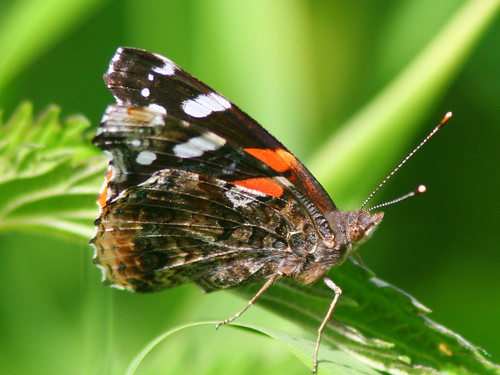
This afternoon, as I was cooking a BBQ at our daughter’s home, a Savannah Sparrow put in an appearance in their back yard:
On May 4, a Ruff was discovered at Nelson Lake/Dick Young Forest Preserve in Kane County, IL, one of our favorite birding “patches.” The preserve is dominated by a shallow lake that is rimmed by marshes and woodlands.This would be a new bird species for Mary Lou and me.
We could not get out until 8:00 AM the next day, and were only able to spend about an hour there. Others were armed with spotting scopes, but none of us located the vagrant Old World sandpiper. Discouraged, we departed to complete some essential chores. We were not free again until 5:00 PM, and this time we had better luck.
As soon as we arrived at the east entrance of Nelson Lake, we saw a couple of birders gathered on a bluff overlooking the wetlands, peering intently through a scope. Quickly, we joined them and were pleased to learn that the Ruff had been under observation for over an hour. Dave offered us eye-popping views of the target bird, which at first glance seemed quite similar to the scores of Lesser Yellowlegs gathered in the shallow water and exposed mud flats.
On closer inspection, the Ruff, on the right, has a brownish rather than gray back, and tends to stand more upright than the Lesser Yellowlegs. It appears pot-bellied, with an almost duck-like chest. The Ruff is a bit larger, and its neck is thicker than that of the yellowlegs, there is no suggestion of a line over the eye, and its bill, unlike the straight and narrow sabre of the yellowlegs, is heavier and seems to droop downward ever so little.
Click on both photos to see more Ruff images:
This was my ABA (The American Birding Association Area encompassing the continental 49 States and Canada) Life Bird number 572. For Mary Lou it represented number 505. Although Mary Lou started birding fairly recently, we now are usually both picking up new lifers simultaneously. Our previous life birds have been the La Sagra’s Flycatcher and the Ivory Gull. Although it has not been our habit to chase after rarities, we hate to pass up the chance to see an unusual bird if it shows up near to where we happen to be at the time.
Poor photo of La Sagra’s Flycatcher:
On September 12, 2003 a vagrant Piratic Flycatcher from southern Mexico suddenly appeared at Bosque Redondo near Fort Sumner, NM. At the time, we were visiting our son and family in Amarillo, Texas. On September 16, on our way back to our home near Albuquerque, we stopped there at about 8:30 AM to hear that it had been seen only 20 minutes earlier. Luckily, we re-found it at 9:10 AM and observed it for almost an hour. The bird ate Russian Olive fruits. It hovered (fluttered rather clumsily) as it plucked the olives from the tree. Once it made a brief foray and caught and ate a medium-sized dragonfly. We did not hear any vocalizations.
This was only the third confirmed sighting of a Piratic Flycatcher ever recorded in the USA, the second for New Mexico: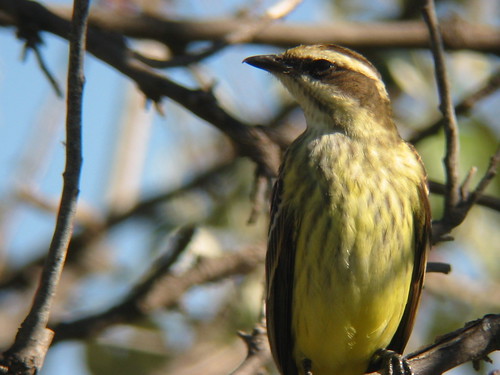
In September of 2006 there was a rare bird alert for a Northern Wheatear, the first ever of this northern and eastern European species to be seen in Everglades National Park. We drove right down and enjoyed great views. I was not into photography at that time, but I captured a shot of it with my 2 megapixel Canon A-40 point-and-shoot– fuzzy, but a nice souvenir (See: Chasing the White-Arse Bird)
We were not always so lucky. A Loggerhead Kingbird, the first of its species ever recorded in Florida, showed up in Key West in mid-March, 2007. We had prior plans to visit the Keys for a few days with my brother and his wife, and we arrived on March 25, 2007. On our way, we took our time sightseeing, arriving later than planned. The kingbird had been seen about an hour before we got there that afternoon, and we looked for the bird for a couple of hours, to no avail. That bird was never seen again!
Presently, we are enjoying the arrival of the spring migrants.
A Louisiana Waterthrush, an early migrant, was singing along the creek in Lippold Park in Batavia, Illinois: 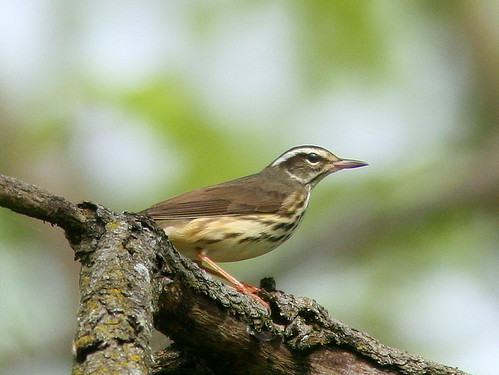
This week, we knew that “birder’s spring” had finally arrived, when we were greeted by some popular residents.
At Lippold Park, we saw our first Scarlet Tanager of the spring season…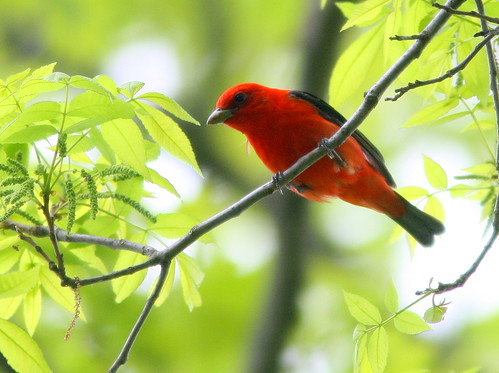
…the first Rose-breasted Grosbeak…
…and Baltimore Oriole:
These female Brown-headed Cowbirds, though much maligned, struck a graceful pose in the branches:
A male cowbird displayed next to the females: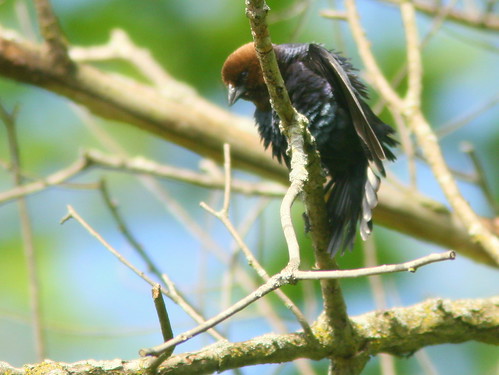
We also “discovered” a Bald Eagle nest not far from our home. We knew that it had been reported in the general vicinity, but thought it was probably in an inaccessible location. While walking in Hawk’s Bluff Park in Batavia, I saw a large raptor in at tree across a busy highway. The bino view made it clear that it was a Bald Eagle at its nest. We subsequently learned that this is the first Bald Eagle nest to be reported in in Kane County, Illinois, since before DDT was banned in the 1970s. Coincindentally, the nest near our Florida home is the first in Broward County over the same time span!
The lone eagle stands watch over the nest. This behavior suggests that the eaglets have hatched, and they do not require brooding by the parent, as they are now capable of regulating their body temperature, at least two weeks old: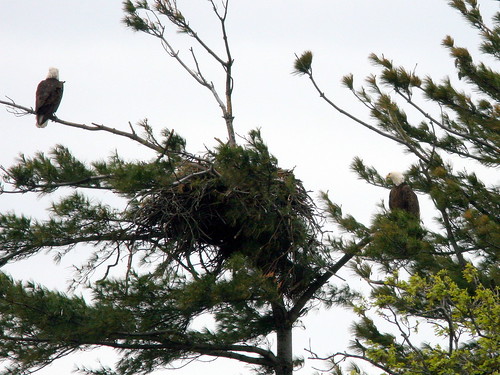
In a few minutes it was joined by a second eagle:
The other parent did not bring in any prey, and it also settled down in the nest tree:

At Jones Meadow Park near our home, in North Aurora, a Sora lurked in the marsh. Its bright yellow bill gave away its position in the shadows:













